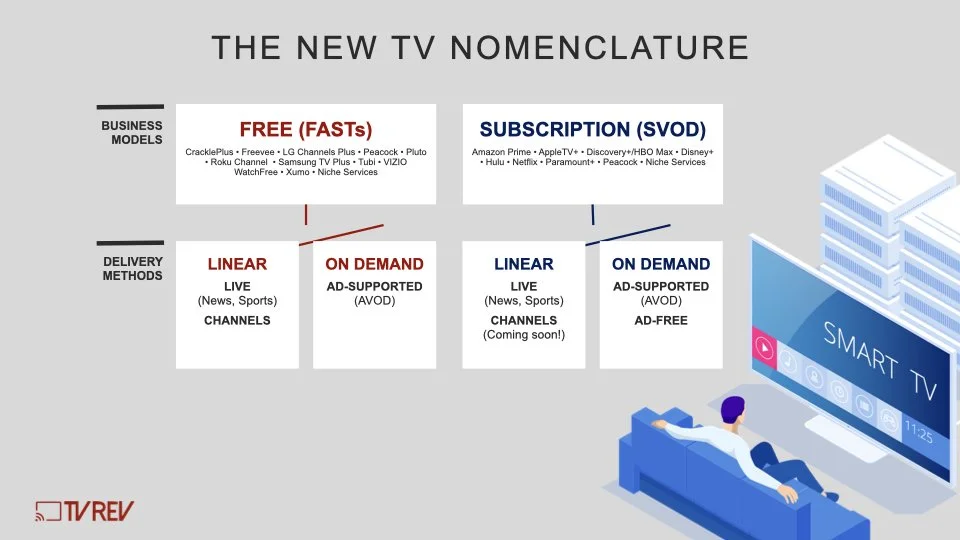The New TV Nomenclature
This infographic about what to call everything in the New Streaming Ecosystem came out of a number of off-the-record interviews we did around our upcoming FAST report.
There is much confusion around what to call everything and the executives we spoke with all noted that it was important to make sure everyone in a deal was working off the same definitions.
So basically it came down to the fact that there are two key divisions in streaming: free vs subscription and ad-supported vs ad-free.
Which one to make primary sort of solved itself now that all of the eight major subscription services have an ad-supported tier or, in the case of Apple and Amazon, an ad-supported sports broadcast.
Which then brings up the final way to slice things: linear versus on-demand.
Here again it seems that pretty much everyone is going to have both, as the live sports broadcast on subscription services are linear... and most everyone we spoke with said they assumed the subscription services would soon be launching their own linear channels fairly soon.
The consensus was that there didn't seem to be a reason not to do so: these channels have proven very popular on the FAST services as a way to binge popular library content, and most of the subscription services have massive stores of library content. Or to paraphrase more than one person we spoke with "You can ask the viewer to pick which one of the 250 episodes of Friends they want to watch every single time, or you can give them a Friends linear channel and choose for them."
So... there you have it: two business models. Free (FAST) and Subscription (SVOD) and two delivery methods, On Demand and Linear (live and channels)
Look for the this insight and more in the first of our two Special Reports of the FASTs, due out next month.


